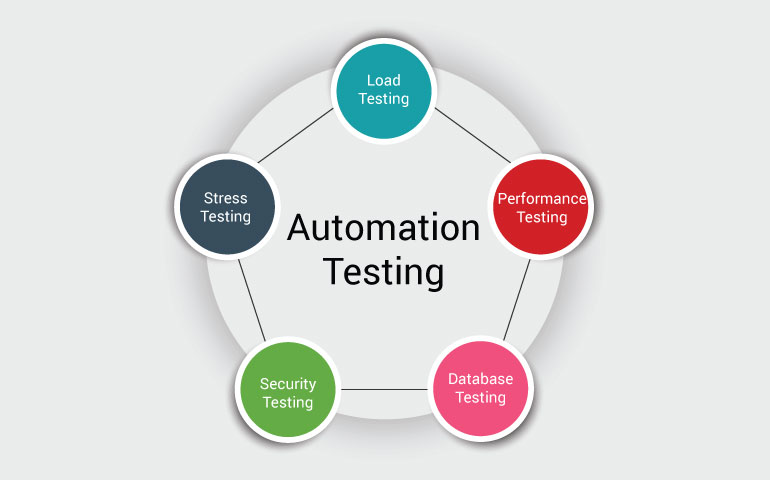The Ultimate Overview to Implementing Automation Testing Successfully
The Ultimate Overview to Implementing Automation Testing Successfully
Blog Article
From Handbook to Automated Testing: A Comprehensive Guide to Transitioning Efficiently and Effectively
In the realm of software application testing, the shift from manual to automated procedures has actually ended up being a progressively vital change for companies seeking to enhance performance and precision in their testing techniques. The journey from guidebook to automated screening is not without its obstacles, however when come close to tactically and with a clear plan in mind, the advantages can be considerable.
Benefits of Automated Examining
Automated screening provides countless advantages, enhancing effectiveness and accuracy in software program advancement processes. Automated examinations can be run all at once on several devices and running systems, substantially speeding up the screening phase compared to hand-operated testing.
Furthermore, automated screening makes sure a greater level of precision in detecting flaws. Since automated tests adhere to predefined manuscripts, human mistake is lessened, leading to more dependable test results. Consistency in testing is also improved, as automated tests execute the exact same steps exactly each time they are run. This uniformity is essential in making sure that all capabilities of the software are thoroughly evaluated, minimizing the probability of unnoticed pests slipping through to production.
Choosing the Right Tools

First of all, evaluate your objectives and requirements. Recognize the range of your task, the technologies included, and the skill set of your team. This analysis will certainly assist you establish the attributes and abilities you require in your screening tools.
Second of all, think about the compatibility of the tools with your existing processes and systems. Smooth integration with your present software program development lifecycle is important to make certain a smooth shift to automation.
In addition, evaluate the scalability and versatility of the devices. As your screening needs advance, the tools must have the ability to adapt and fit adjustments efficiently.
Finally, consider the assistance and area around the tools. Robust support and an energetic customer area can offer valuable sources and assistance when executing automated screening. By meticulously considering these aspects, you can select the right tools that line up with your demands and established the stage for a successful transition to automated testing.
Composing Effective Examination Scripts

When crafting test scripts, it is necessary to think about the particular requirements of the software program being checked and ensure that the manuscripts deal with all crucial functionalities. Clear and detailed calling conventions for test manuscripts and test instances can improve readability and maintainability. In addition, integrating mistake handling systems within the examination scripts can aid in recognizing and dealing with concerns promptly.
Furthermore, organizing test manuscripts into modular components can improve reusability and scalability, lowering redundancy and enhancing effectiveness in examination script maintenance. Routine testimonials and updates to examine scripts are critical to keep speed with advancing software application needs and functionalities. By complying with these concepts, testers can develop reliable and robust test scripts that add significantly to the success of automated testing processes.
Integrating Automation Into Workflows
By effortlessly integrating automated screening devices like Selenium or Appium into the software application development lifecycle, groups can accomplish faster feedback on code changes, leading to quicker pest discovery and resolution. This combination permits for constant testing throughout the growth process, ensuring that any type of issues are identified early on, resulting in greater software top quality. Correct combination of automation tools calls for collaboration in between development, testing, and procedures teams to develop a unified workflow that enhances efficiency and performance in providing premium software application items.
Making Certain a Smooth Shift
Successfully transitioning to automated testing entails careful planning and careful implementation to minimize disturbances and maximize performance Learn More Here in the software growth process - automation testing. To ensure a smooth shift, it is vital to start by performing an extensive analysis of the current testing procedures and recognizing areas where automation can bring the most significant benefits. Engaging with all stakeholders at an early stage at the same time, consisting of programmers, testers, and task supervisors, is crucial for garnering support and buy-in for the automation initiative
Communication is key throughout this transition phase. Clear communication of the objectives, advantages, and assumptions of automated testing assists to manage any resistance or problems that might emerge. Furthermore, offering adequate training and sources for group members to upskill in automation tools and strategies is crucial for making sure a successful change.

Final Thought
In conclusion, transitioning from manual to automated screening provides various advantages, consisting of important site enhanced efficiency and integrity. By choosing the suitable devices, creating effective examination scripts, and integrating automation flawlessly right into process, organizations can make sure a successful and smooth transition. It is vital to welcome automation as an important possession in software program screening processes to improve general quality and efficiency.
In the realm of software program screening, the shift from handbook to automated processes has actually become an increasingly essential shift for organizations seeking to boost efficiency and precision in their testing techniques. Automated tests can be run simultaneously on numerous devices and operating systems, significantly speeding up the screening phase compared to hand-operated testing. Consistency in screening is additionally improved, as automated examinations execute the very same steps specifically each time they are run.To guarantee the effective implementation of chosen screening devices, the creation of efficient examination manuscripts plays a vital duty in validating the functionality and performance of automated procedures - automation testing. web By adhering to these principles, testers can create robust and effective examination scripts that add substantially to the success of automated screening procedures
Report this page